Choosing the Right Ethernet Cable in 2025 | Complete Buyer’s Guide
Last Updated on May 26, 2025
Think of your network as a highway, and Ethernet cables as the lanes on that highway. Like with a physical highway, wider lanes and better overall construction create a faster and smoother traffic flow. The same concept applies to your network – the cable you choose has a significant impact on your speed, reliability, and the overall performance of your network.
The 2025 reality: While older installations may still rely on Cat5e, any new network installation today will almost certainly use Cat6 as the baseline standard, with Cat6A becoming the go-to choice for high-performance and future-proof deployments.
When selecting an Ethernet cable, consider three fundamental factors:
- Category (Speed): How fast do you want your lanes to be?
- Jacket Type (Environment): Where will this “highway” be built?
- Shielding (Protection): Do your lanes need extra protection from “hazards”?
Let's explore these aspects to ensure you choose the perfect Ethernet cable for your setup and our tested recommendations for each category.
Key Takeaways – Choosing the Right Ethernet Cable in 2025
| Decision Factor | Key Points | When It Matters Most | Our 2025 Recommendation |
|---|---|---|---|
| Category (Speed) | Cat5e remains in legacy installations, while Cat6 is now the standard for new deployments. Cat6A is essential for high performance and future-proofing. | New installations, office upgrades, and future-proofing | Cat6: New installation standard |
| Jacket Type (Environment) | Riser (CMR) for most indoor uses. Plenum (CMP) for commercial spaces above ceilings. Outdoor-rated for harsh conditions and potential burial. | Indoor vs. outdoor projects, meeting building codes | CMR: Most versatile for new installs |
| Shielding (Protection) | Shielded cables (STP) are rarely needed in standard office environments. Consider them for high-EMI environments or near power infrastructure. | Industrial settings, data centers | Unshielded: Cost-effective for most uses |
2025 Quick Pick: For new installations, start with Cat6. It's now the de facto standard, offers excellent future-proofing, and the price difference from Cat5e is negligible.
Table of Contents
- 1 Category Standards: What's Changed in 2025
- 2 The New Standard: Why Cat6 Dominates 2025 Installations
- 3 Best Ethernet Cables by Category – Our 2025 Tested Picks
- 4 Understanding Cat7: The Non-Standard That Confuses Buyers
- 5 Jacket Types: Environment-Specific Requirements
- 6 Shielding: When Protection Becomes Essential
- 7 Beyond the Basics: 2025 Installation Considerations
- 8 Professional Installation and Testing Requirements
- 9 Conclusion
- 10 FAQ
Category Standards: What's Changed in 2025
The Ethernet cable landscape has matured significantly since our last major update. The IEEE 802.3 standards continue to evolve, with current specifications supporting speeds from 1 Mb/s to 400 Gb/s, but for business and residential applications, the practical categories have shifted:
Current Category Breakdown for 2025
- Cat 5e (Legacy Status): While still functional in existing installations, Cat 5e is rarely specified for new projects. It supports up to 1 Gbps speeds and remains adequate for basic internet connectivity, but lacks the future-proofing that modern installations require. Best for: Temporary connections, budget-conscious retrofits of existing systems.
- Cat 6 (2025 Standard): Cat 6 cable specifies performance of up to 250 MHz, compared to 100 MHz for Cat 5 and Cat 5e and has become the baseline for virtually all new installations. Supports 10 Gbps at shorter distances (up to 55 meters) and 1 Gbps at full 100-meter runs. Best for: New office installations, home network upgrades, standard business deployments.
- Cat 6A (High-Performance Standard): Category 6A cable is specified for 500 MHz and has improved alien crosstalk characteristics, allowing 10GBASE-T to be run for the same 100-metre maximum distance as previous Ethernet variants. This is becoming the preferred choice for enterprises and future-focused installations. Best for: High-density office environments, multi-gigabit network solutions, data-intensive applications.
- Cat 8 (Specialized Applications): Designed for data center and short-run applications supporting up to 40 Gbps over 30 meters. Generally overkill for standard business applications but essential for specialized high-performance scenarios.
Industry Standards Compliance
The current TIA-568 revision includes Category 5e (100 MHz), 6 (250 MHz), 6A (500 MHz), and 8 (2,000 MHz), providing the official framework that guides professional installations. When balanced twisted‑pair cabling is used, a minimum of two category 6A or higher cabling runs shall be installed to each wireless access point, reflecting how even wireless infrastructure now demands higher-category cabling.
| Category | Max Speed | Bandwidth | Full Distance (100m) | 2025 Installation Status | Typical Cost/Foot |
|---|---|---|---|---|---|
| Cat 5e | 1 Gbps | 100 MHz | ✅ 1 Gbps | Legacy/Maintenance only | $0.20-0.35 |
| Cat 6 | 10 Gbps* | 250 MHz | ✅ 1 Gbps | Current Standard | $0.30-0.50 |
| Cat 6A | 10 Gbps | 500 MHz | ✅ 10 Gbps | High-performance standard | $0.50-0.85 |
| Cat 8 | 40 Gbps | 2000 MHz | ❌ 30m max | Specialized applications | $1.00-2.00 |
*Cat 6 supports 10 Gbps up to 55 meters
The New Standard: Why Cat6 Dominates 2025 Installations
The networking industry has reached a tipping point where Cat6 has effectively replaced Cat5e as the baseline standard for new installations. Here's why this shift makes both technical and economic sense:
Economic Reality
The cost differential between Cat5e and Cat6 has virtually disappeared, often representing less than 10% additional material cost. When you factor in labor costs (which remain the same regardless of cable category), choosing Cat5e for new installations has become a false economy.
Performance Requirements
Modern networks demand more than the 1 Gbps ceiling of Cat5e:
- Smart office devices increasingly require reliable, high-bandwidth connections
- Power over Ethernet (PoE) applications perform better with Cat6's superior specifications
- Video conferencing and digital displays benefit from the additional bandwidth headroom
- Cloud-based applications and large file transfers strain Cat5e networks
Future-Proofing Imperative
Installing Cat5e in 2025 is akin to installing yesterday's technology today. With internet service providers increasingly offering multi-gigabit residential plans and businesses adopting bandwidth-intensive applications, Cat6 provides essential future-proofing without significant additional investment.
Industry Adoption
Professional network installers report that 85% of new commercial installations now specify Cat6 or higher, with Cat6A becoming standard for enterprise environments and high-density applications.
Pro Insight: Even if your current internet plan is under 1 Gbps, Cat6 ensures your infrastructure won't become a bottleneck as services evolve. The investment in proper cabling pays dividends for 10-15 years.
Best Ethernet Cables by Category – Our 2025 Tested Picks
After extensive testing across various scenarios and environments, here are our top recommendations for each category and use case:
Best Overall Cat 6 Cable (2025 Standard)
Monoprice Cat6 Ethernet Cable – 23AWG Pure Copper
- ✅ Solid copper conductors for optimal performance
- ✅ Snagless RJ45 connectors with strain relief
- ✅ Available in lengths from 1ft to 1000ft
- ✅ Exceeds TIA-568-C.2 specifications
- ✅ Lifetime warranty with responsive customer support
- Best for: Standard office installations, home network upgrades, and patch panels
Why it wins: Combines professional-grade performance with consumer-friendly pricing. The 23AWG solid copper construction ensures reliable long-term performance, while the build quality rivals cables costing twice as much.
Best Premium Cat 6A Cable (Future-Proof Choice)
Cable Matters Cat6A Ethernet Cable – 10G Ready
- ✅ Full 10 Gbps support up to 100 meters
- ✅ Superior alien crosstalk protection
- ✅ LSZH (Low Smoke Zero Halogen) jacket available
- ✅ Exceeds TIA-568-C.2-1 specifications
- ✅ Professional-grade 23AWG solid copper
- Best for: High-performance office networks, data centers, future-proofing installations
Why it leads: When you need guaranteed 10 Gbps performance over full cable runs, this cable delivers without compromise.
Best Value Cat 5e Cable (Legacy/Budget)
Amazon Basics Cat5e Network Cable
- ✅ Reliable 1 Gbps performance
- ✅ Multiple color options for the organization
- ✅ Basic lifetime warranty
- ✅ UL listed and ETL verified
- Best for: Temporary installations, existing Cat5e network extensions, budget-conscious projects
Important note: We only recommend Cat5e for specific legacy scenarios or extreme budget constraints. For any new installation, the minimal cost increase to Cat6 provides significantly better value.
Best Outdoor Ethernet Cable
Ubiquiti TOUGHCable Outdoor Cat5e/Cat6
- ✅ UV-resistant outdoor jacket rated for direct burial
- ✅ Available in both Cat5e and Cat6 versions
- ✅ Temperature range: -40°F to +176°F
- ✅ Shielded design for EMI protection
- ✅ Includes pull-through design for easier installation
- Best for: Outdoor security camera installations, building-to-building connections, harsh environment applications
Best Flat Ethernet Cable
Jadaol Cat 6 Flat Network Cable
- ✅ Ultra-thin design perfect for under carpets and doorways
- ✅ Cat6 performance in a space-saving profile
- ✅ Available in multiple colors and lengths
- ✅ Strong, tangle-resistant flat design
- Best for: Clean installations, temporary runs, apartment networking
Best Shielded Cable
Cable Matters Cat6A STP (Shielded Twisted Pair)
- ✅ Full S/FTP shielding for maximum EMI protection
- ✅ Grounding wire for proper shield termination
- ✅ Industrial-grade construction
- ✅ Maintains Cat6A performance with added protection
- Best for: Industrial environments, near power lines, high-EMI locations
Installation Tip: Always purchase 10-15% more cable than your measurements indicate. It's much easier to trim excess than to re-run an entire cable that comes up short.
Understanding Cat7: The Non-Standard That Confuses Buyers
Cat7 represents one of the most common sources of confusion in ethernet cable selection. Here's what you need to know:
Why Cat7 Isn't Recommended
TIA did not officially recognize categories 7 and 7A, which were generally only used outside the United States. While some manufacturers continue to market Cat7 cables, they fall into a regulatory gray area that creates unnecessary complications:
- Connector Incompatibility: Cat7 was designed for GG45 and TERA connectors, not the standard RJ45 connectors used throughout the industry
- No Official IEEE Recognition: Unlike Cat5e, Cat6, Cat6A, and Cat8, Cat7 never received official standardization
- Market Redundancy: Cat6A provides equivalent performance with full standards compliance
The Marketing Problem
Many consumers encounter Cat7 cables marketed at attractive prices, often positioned between Cat6 and Cat6A. However, these cables typically use standard RJ45 connectors, negating any theoretical advantages of the Cat7 specification.
Our Recommendation
Skip Cat7 entirely. If you need performance beyond Cat6, invest in properly specified Cat6A cables that provide official standards compliance and guaranteed interoperability.
Jacket Types: Environment-Specific Requirements
The cable jacket serves as the first line of defense against environmental hazards. ANSI/TIA-568 defines structured cabling system standards for commercial buildings, including cable installation requirements and performance characteristics. Choosing the wrong jacket type can result in cable failure, code violations, or safety hazards.
Riser-Rated (CMR) – The 2025 Standard
Technical specification: Flame-retardant jacket designed for vertical runs between floors
Applications:
- Standard office installations
- Residential networking
- Most commercial buildings
- Runs through walls, floors, and risers
Best CMR Pick: Monoprice Cat6 CMR Cable
- UL Listed CMR rating
- Available in both plenum and riser versions
- Professional-grade 23AWG solid copper
- Multiple color options for the organization
Plenum-Rated (CMP) – Commercial Requirements
Technical specification: Low-smoke, fire-retardant jacket for air handling spaces
Applications:
- Above drop ceilings in commercial buildings
- HVAC return air spaces
- Any area used for air circulation
- Required by building codes in many commercial installations
Best CMP Pick: Cable Matters Cat6A Plenum Cable
- LSZH (Low Smoke Zero Halogen) construction
- Exceeds UL 1666 flame propagation requirements
- Professional installation approved
- Available in bulk spools for large projects
Important: Always verify local building codes. Many jurisdictions require plenum-rated cables even in residential installations when running through certain spaces.
Outdoor/Direct Burial – Environmental Protection
Technical specification: UV-resistant, waterproof jacket designed for outdoor conditions
Applications:
- Building-to-building connections
- Outdoor security camera feeds
- Parking lot lighting and access control
- Any exposure to weather or direct burial
Best Outdoor Pick: Ubiquiti UniFi Outdoor Cable
- PE (Polyethylene) jacket for UV resistance
- Direct burial rated without conduit
- Operating temperature: -40°F to +176°F
- Available with built-in messenger wire for aerial installations
Code Compliance: Using indoor-rated cable outdoors violates electrical codes and voids insurance coverage. Always match cable jacket to environment.
Shielding: When Protection Becomes Essential
Ethernet cables employ twisted-pair geometry to cancel electromagnetic interference naturally, but certain environments require additional protection through cable shielding.
Understanding Shielding Types
- U/UTP (Unshielded): Standard office-grade cable with no additional shielding
- F/UTP: Overall foil shield around all pairs
- U/FTP: Individual foil shields around each pair
- S/FTP: Both overall shield and individual pair shields (maximum protection)
When Shielding Becomes Necessary
High-EMI Environments:
- Near fluorescent lighting or electric motors
- Parallel runs with electrical conduit over 30 feet
- Industrial facilities with heavy machinery
- Data centers with high-density equipment
Interference Symptoms:
- Intermittent connectivity issues
- Reduced throughput despite adequate equipment
- Connection errors during high electrical activity
- Network performance that varies with building systems
Shielding Best Practices
- Proper Grounding: Shielded cables must be properly grounded at both ends
- Consistent Shielding: Mix shielded and unshielded cables carefully
- Professional Installation: Improper shield termination can worsen interference
- Cost Consideration: Shielded cables cost 30-50% more than unshielded equivalents
Best Shielded Cable: Cable Matters Cat6A STP
- S/FTP construction for maximum protection
- Includes drain wire for easy grounding
- Maintains full Cat6A performance with shielding
- Professional-grade construction and testing
Assessment Tip: If you're experiencing network issues near electrical equipment, try temporarily relocating a small network segment. If performance improves, shielded cables may resolve the problem permanently.
Beyond the Basics: 2025 Installation Considerations
Modern network installations require more than just selecting the right cable category. Here are the critical factors that separate professional-grade installations from amateur efforts:
Distance Limitations and Performance
The maximum recommended length for Ethernet cables without signal quality loss is 100 meters (328 feet) for Cat 5e, Cat 6, and Cat 6A cables. However, performance can degrade before reaching these limits:
Performance Guidelines:
- 90 meters permanent link + 10 meters patch cords = 100 meter total
- Cat6 10 Gbps: Limited to 55 meters (180 feet)
- Cat6A 10 Gbps: Full 100 meters (328 feet)
- Cat8: 30 meters maximum for 40 Gbps applications
Conductor Types: Solid vs. Stranded
Solid Core Conductors:
- Lower resistance for better signal transmission
- Required for permanent installations per TIA standards
- Less flexible but more durable for in-wall runs
- Standard for horizontal cabling applications
Stranded Core Conductors:
- More flexible for patch cables and user connections
- Higher resistance limits distance capabilities
- Easier to terminate with modular plugs
- Standard for patch cords and equipment connections
Power over Ethernet (PoE) Considerations
Modern networks increasingly rely on PoE for devices like wireless access points, security cameras, and VoIP phones. Cable selection affects PoE performance:
PoE Standards and Cable Requirements:
- PoE (15.4W): Cat5e adequate for most applications
- PoE+ (30W): Cat6 recommended for optimal efficiency
- PoE++ (60W/90W): Cat6A required for high-power applications
- Voltage drop: Lower resistance cables reduce power loss over distance
Advanced Installation Technologies
Structured Cabling Design:
Modern installations follow hierarchical design principles:
- Horizontal cabling: Workstation to telecommunications room
- Backbone cabling: Between telecommunications rooms and equipment rooms
- Patch panel organization: Professional termination and testing points
Cable Management:
Proper cable management affects both performance and maintenance:
- Bend radius: Minimum 4x cable diameter to prevent performance degradation
- Bundle size: Limit bundles to prevent alien crosstalk in high-frequency applications
- Separation: Maintain distance from power cables and EMI sources
Professional Installation and Testing Requirements
Professional-grade Ethernet installations require proper testing and certification to ensure performance and reliability.
Essential Installation Tools
Cable Testing Equipment:
Fluke Networks DTX-1800 Cable Analyzer
- Full Cat6A certification testing
- TIA-568-C.2 compliance verification
- Generates professional test reports
- Essential for warranty and performance validation
Klein Tools VDV Scout Pro 3 Tester
- Basic continuity and wiremap testing
- Tone generation for cable tracing
- Affordable verification for smaller projects
- Battery-powered portable design
Professional Termination Tools:
Klein Tools VDV226-110 Crimping Tool
- Professional-grade RJ45 termination
- Works with Cat5e through Cat6A cables
- Integrated cutting and stripping functions
- Essential for field terminations
Testing Standards and Certification
ANSI/TIA-568-C.2 defines Category 6A field testing requirements that ensure installed cabling meets performance specifications:
Testing Levels:
- Verification: Basic connectivity and wiremap testing
- Qualification: Validates specific application support (e.g., Gigabit Ethernet)
- Certification: Comprehensive testing against all TIA parameters
Required Test Parameters:
- Wire map: Confirms proper pin assignments and continuity
- Length: Verifies cable runs meet distance requirements
- Insertion Loss: Measures signal attenuation across the frequency range
- Near End Crosstalk (NEXT): Evaluates signal interference between pairs
- Return Loss: Measures signal reflection from impedance mismatches
Professional Installation Services
For complex installations, consider professional services that ensure code compliance and optimal performance:
When to Hire Professionals:
- Commercial building installations requiring code compliance
- Plenum or riser-rated cable installations
- High-density environments with complex cable management requirements
- Projects requiring certification testing and documentation
Miami-Area Professional Services:
Professional network cabling services for businesses in South Florida ensure installations meet local codes and performance requirements while providing proper documentation for warranty and insurance purposes.
Conclusion
The Ethernet cabling landscape in 2025 reflects a maturation of standards and a clear shift toward higher performance as the baseline expectation. Cat6 has emerged as the de facto standard for new installations, offering the ideal balance of performance, future-proofing, and cost-effectiveness.
Our 2025 Recommendations Summary:
For New Installations:
- Standard Applications: Cat6 with CMR jacket rating
- High-Performance/Future-Proof: Cat6A for full 10 Gbps capability
- Budget-Conscious: Cat6 remains the smart choice; Cat5e savings are minimal
- Outdoor Applications: Environment-rated Cat6 with proper jacket specifications
Key Decision Framework:
- Category determines capability: Cat6 for standard needs, Cat6A for high performance
- Jacket matches environment: CMR for indoor, CMP for plenum, outdoor-rated for external
- Shielding adds complexity: Only specify when EMI is a confirmed issue
Looking Forward
As internet service providers expand multi-gigabit offerings and workplace technology demands increase, the infrastructure investment in proper cabling becomes more critical.
Ready to upgrade your network infrastructure? Whether you're planning a simple home office upgrade or a complex commercial installation, start with our tested recommendations above. Consider consulting with professional network installation services for larger projects or specialized requirements to ensure optimal performance and code compliance.
Do you have questions about your specific installation needs? Leave a comment below and discuss the best approach for your unique requirements!
Related Reading: For comprehensive network planning insights, explore our guides on multi-gigabit network solutions, Power over Ethernet implementation, and future-proofing your office network.
FAQ
What factors should I consider when choosing the best Ethernet cable for my business in 2025?
In 2025, Cat6 will become the baseline standard for new installations, so start there unless you have specific requirements for higher performance. Consider your bandwidth needs, installation environment (indoor/outdoor/plenum), cable run distances, and any PoE requirements. For most business applications, Cat6 with CMR jacket rating provides the optimal balance of performance, future-proofing, and cost. If you're planning for multi-gigabit network upgrades or need guaranteed 10 Gbps performance, invest in Cat6A.
How do Ethernet cable categories affect internet speed in 2025?
Ethernet cable categories directly influence your network's maximum potential speeds. Cat5e supports up to 1 Gbps, Cat6 supports up to 10 Gbps (at distances up to 55 meters), and Cat6A maintains 10 Gbps for the full 100-meter distance. However, your actual internet speed depends on your service plan, network equipment, and overall infrastructure. With ISPs increasingly offering multi-gigabit plans, Cat6 ensures your cabling won't become a bottleneck. For comparison details, see our Cat6 vs Cat8 analysis.
Is Cat5e still acceptable for new installations in 2025?
While Cat5e still functions perfectly for basic applications, we strongly recommend Cat6 for any new installation in 2025. The cost difference is minimal (typically less than 10% additional material cost), but Cat6 provides significantly better future-proofing, improved performance margins, and better support for Power over Ethernet applications. Cat5e should only be considered for temporary installations, extreme budget constraints, or extending existing Cat5e networks.
What is the difference between Cat6 and Cat6A cables for business use?
Cat6 operates at 250 MHz bandwidth and supports 10 Gbps up to 55 meters, while Cat6A operates at 500 MHz and maintains 10 Gbps for the full 100-meter distance. Cat6A also provides superior alien crosstalk protection, making it ideal for high-density installations. For standard business applications, Cat6 is sufficient and cost-effective. Choose Cat6A for high-performance office networks, data centers, or when you need guaranteed 10 Gbps performance over longer distances.
When do I need shielded ethernet cables?
Shielded cables are beneficial in environments with high electromagnetic interference (EMI). Signs you might need shielding include erratic connection speeds, network issues near electrical equipment, or installations in industrial environments. Common scenarios include runs parallel to power lines over 30 feet, near heavy machinery, or in facilities with substantial electrical noise. For most office environments, unshielded cables are sufficient and more cost-effective. If considering shielded cables, ensure proper grounding for optimal performance.
How do building codes affect ethernet cable selection?
Cable jacket ratings must comply with local building codes and the installation environment. Riser-rated (CMR) cables work for most indoor applications, while plenum-rated (CMP) cables are required for air-handling spaces like above drop ceilings in commercial buildings. Always verify local requirements, as some jurisdictions have specific mandates. Current TIA standards recommend minimum Cat6A for wireless access points, reflecting evolving infrastructure requirements. For complex installations, consult with professional network cabling services.
What cable length limitations should I consider for Ethernet installations?
Standard Ethernet cables support a maximum distance of 100 meters (328 feet), comprising 90 meters of permanent link plus 10 meters of patch cords. However, performance can vary by category: Cat6 supports 10 Gbps only up to 55 meters, while Cat6A maintains 10 Gbps for the full 100-meter distance. For longer distances, consider using network switches as repeaters, upgrading to Cat6A, or implementing fiber optic solutions. Always factor in actual cable routing when measuring distances.
Should I install ethernet cables myself or hire professionals?
DIY installation works well for simple patch cables and basic home networking, but professional installation is recommended for in-wall runs, commercial applications, or plenum spaces. Professional installers ensure code compliance, proper testing, and warranty coverage. Consider professional services for structured cabling projects, complex routing requirements, or when certification testing is needed. The investment in professional installation typically pays for itself through proper performance and avoided troubleshooting costs.
How has ethernet cabling changed for 2025 installations?
2025 represents a significant shift where Cat6 has become the baseline standard for new installations, replacing Cat5e in most specifications. Key changes include: increased adoption of Cat6A for future-proofing, enhanced PoE requirements for modern devices, stricter building code enforcement for jacket ratings, and greater emphasis on proper testing and certification. The cost differential between categories has decreased, making higher-performance options more accessible.
What role does Ethernet cabling play in modern cybersecurity?
Proper Ethernet cabling forms the foundation of network security by ensuring reliable, predictable performance that supports security systems and monitoring tools. Following frameworks like NIST's Cybersecurity Framework 2.0 emphasize infrastructure security as a fundamental element. Quality cabling supports consistent performance for security cameras, access control systems, and network monitoring tools. Poor cabling can create vulnerabilities through intermittent connectivity that masks security issues or prevents proper monitoring. For comprehensive security planning, see our network security best practices guide.


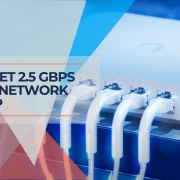

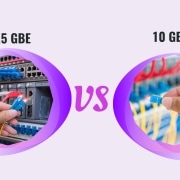

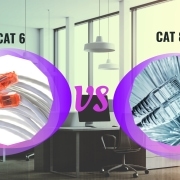
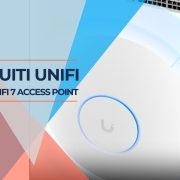
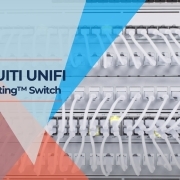


Leave a Reply
Want to join the discussion?Feel free to contribute!